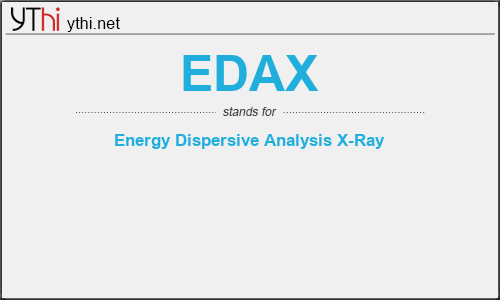What does EDAX mean? What is the full form of EDAX?
The full form of EDAX is Energy Dispersive Analysis X-Ray.
Energy dispersive X-ray analysis (EDXA) is an analysis method that can be coupled with several applications including SEM, TEM, and STEM.
EDXA, when combined with electron microscopes, can provide elemental analysis on areas as small as several nanometers. The effect of the electron beam on the surface and penetrating into the depth of the particle produces X-rays that are characteristic of the elements found on and near the surface of the sample. In EDXA, one can determine the elemental composition of individual points or map out the areal distribution of elements, using the scanning capability of the electron microscope.
One caution needs to be observed when doing elemental analysis using EDXA. The X-rays produced vary depending on the acceleration voltage of the electron beam. The higher the atomic number of the element, the higher is the acceleration voltage that is required to produce the X-ray emission. Conversely, the higher the acceleration voltage of the microscope, the greater is the depth of penetration of the electron beam into and through the particle. It is thus possible, and indeed highly likely, to detect X-rays emitted from the surface the particle rests on. To some degree, this can be compensated by measuring the EDXA on the surface next to the particle. However, this introduces some ambiguity about the true composition of the particle, as it may contain some of the elements of the supporting surface.
EDAX
means
Energy Dispersive Analysis X-Ray![]()
Translate Energy Dispersive Analysis X-Ray to other language.


Leave a Reply
You must be logged in to post a comment.